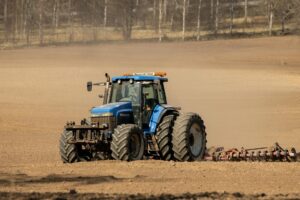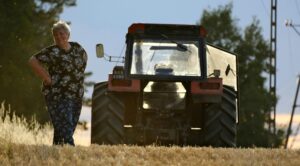When it comes to dependable performance, long-lasting build quality, and innovative design, John Deere lawn tractors are at the top of the list. Over the decades, John Deere has produced a wide range of lawn tractor models that cater to various yard sizes, terrain types, and user preferences. This article provides a detailed breakdown of John Deere lawn tractor models by year, covering their overview, engine specifications, transmissions, and dimensions.
Whether you’re a homeowner looking to buy a used model or an enthusiast restoring classic Deere machines, this article gives you all the insights and technical data you need.
Overview of John Deere Lawn Tractor Models by Year
John Deere has been manufacturing lawn and garden tractors since the 1960s, starting with the model 110 in 1963. Since then, the brand has introduced several model series such as the 100 Series, 300 Series, X300, X500, and X700 Series, and Select Series models.
Evolution Timeline:
| Year | Key Model Introductions |
|---|---|
| 1963 | John Deere 110 (first lawn tractor) |
| 1975 | 200 Series (210, 212, 214) |
| 1983 | 300 Series (318, 316) |
| 1992 | GT and GX Series |
| 2003 | L Series (low-cost models for homeowners) |
| 2006 | LA Series (improved L Series) |
| 2011 | D Series introduced |
| 2016 | E Series and S Series follow |
| 2020 | Continuation of X300, X500, X700 Select Series |
Over time, the tractors evolved from manual start engines and basic gear drives to hydrostatic transmissions, power steering, and advanced operator comfort features. Each decade brought new technology while maintaining the brand’s commitment to durability.
Engine Specifications by Series
John Deere lawn tractors have been powered by a wide range of engines from different manufacturers, including Kohler, Briggs & Stratton, Kawasaki, and Yanmar.
1960s–1980s Models:
- John Deere 110 (1963) Engine: 7 hp Kohler K161 Single-cylinder air-cooled
- John Deere 318 (1983–1992) Engine: Onan B43G, 18 hp Twin-cylinder, air-cooled
These early engines were known for their durability, though they were relatively loud and less fuel-efficient compared to modern engines.
1990s–2000s Models:
- John Deere GT275 (1994) Engine: Kawasaki FD590V, 17 hp Liquid-cooled, V-twin More fuel-efficient and quieter
- John Deere L120 (2003) Engine: Briggs & Stratton Intek V-Twin, 20 hp Air-cooled with overhead valves (OHV)
These engines marked a shift to more consumer-friendly operation with electric start, quieter function, and easier maintenance.
2010s–Present Models:
- John Deere X350 (2016–Present) Engine: Kawasaki FS600V, 18.5 hp V-twin, air-cooled, commercial-grade durability
- John Deere X758 (Diesel) Engine: Yanmar 3TNV76, 24 hp 3-cylinder, liquid-cooled diesel
Modern engines focus on power, fuel efficiency, lower emissions, and low vibration. Most come with full pressure lubrication systems, making them suitable for extended hours of operation.
Transmission Systems by Model and Year
Transmission type plays a major role in how a lawn tractor performs. Over the years, John Deere has transitioned from basic gear transmissions to modern hydrostatic and electronic drive systems.
1960s–1980s Models:
- John Deere 110 (1963): 4-speed manual gear transmission
- John Deere 318 (1983): Hydrostatic transmission with twin levers Infinite forward and reverse speeds Optional rear PTO and hydraulics
These tractors required clutching and manual shifting, but they were simple to maintain and repair.
1990s–2000s Models:
- John Deere GX345 (2002): Hydrostatic transmission Foot-pedal-controlled speed and direction
- John Deere L130 (2004): Tuff Torq K46 hydrostatic Smooth forward/reverse transition with foot pedals
Hydrostatic transmissions became standard during this period, improving ease of use and control.
2010s–Present Models:
- John Deere X350 (2020s): Tuff Torq K46 hydrostatic with cruise control Twin Touch™ pedals for better maneuverability
- John Deere X758 (Diesel, 4WD): Shaft-driven hydrostatic transmission Heavy-duty commercial-grade drivetrain
Modern transmissions offer higher torque, better reliability, and features like electronic cruise control, 4WD options, and differential lock for improved traction.
Dimensions and Design Evolution
The size and structure of John Deere lawn tractors have also changed considerably over the years to improve operator comfort, stability, and compatibility with attachments.
Classic Models (1960s–1980s):
- John Deere 110 Length: 63 in Width: 33 in Height: 38 in Weight: ~500 lbs
- John Deere 318 Length: 67 in Width: 40 in Height: 45 in Weight: ~800 lbs
These models were compact but built with heavy-duty steel frames and components.
Mid-Era Models (1990s–2000s):
- John Deere GT275 Length: 69 in Width: 36 in Height: 41 in Weight: ~650 lbs
- John Deere L120 Length: 71 in Width: 47 in Height: 45 in Weight: ~500–550 lbs
Tractors became slightly larger with better seating and ergonomic designs. Cutting deck options ranged from 38″ to 48″.
Modern Models (2010s–2020s):
- John Deere X350 Length: 72 in Width (w/ deck): 53 in Height: 47 in Weight: ~590–650 lbs Deck sizes: 42″, 48″, 54″
- John Deere X758 (Diesel 4WD) Length: 75 in Width: 51 in Height: 49 in Weight: ~1100 lbs
Today’s lawn tractors are heavier, more stable, and feature adjustable seats, LED lighting, tilt steering, and digital dashboards. They are also better suited for larger properties and tougher mowing conditions.
Popular John Deere Lawn Tractor Models by Year
Here are some standout models from each era:
| Year | Model | Key Features |
|---|---|---|
| 1963 | 110 | First lawn tractor, gear drive, Kohler engine |
| 1975 | 214 | 14 hp engine, 4-speed gear, rugged design |
| 1983 | 318 | Onan engine, hydrostatic, dual hydraulics |
| 1998 | GT275 | Kawasaki engine, hydrostatic, 48″ deck |
| 2003 | L120 | Twin-cylinder engine, hydrostatic |
| 2011 | D140 | Affordable, 48″ deck, Briggs engine |
| 2016 | X350 | Kawasaki engine, modern ergonomics |
| 2022 | X758 | Diesel, 4WD, shaft-drive, premium build |
Conclusion: Choosing the Right John Deere Lawn Tractor
Understanding John Deere lawn tractor models by year is essential for choosing the right equipment for your lawn care needs. Whether you’re looking for a classic workhorse, a budget-friendly used model, or a cutting-edge machine, there’s a John Deere tractor for every application.
From the reliable John Deere 110 of the 1960s to the powerful X758 of today, each model has contributed to John Deere’s legacy in lawn care innovation. Make sure to review specifications for engine power, transmission type, deck width, and overall size before making your buy or restoration choice.



